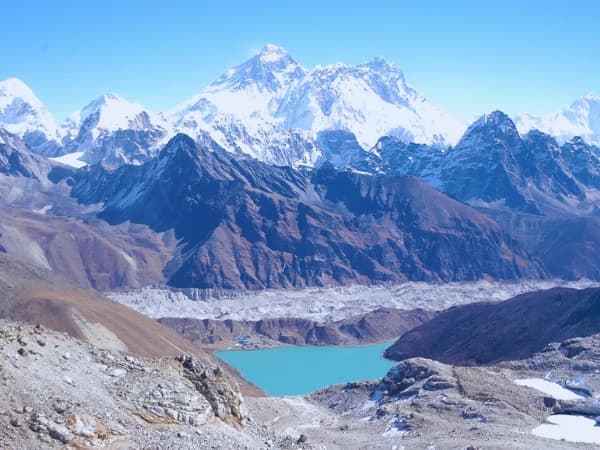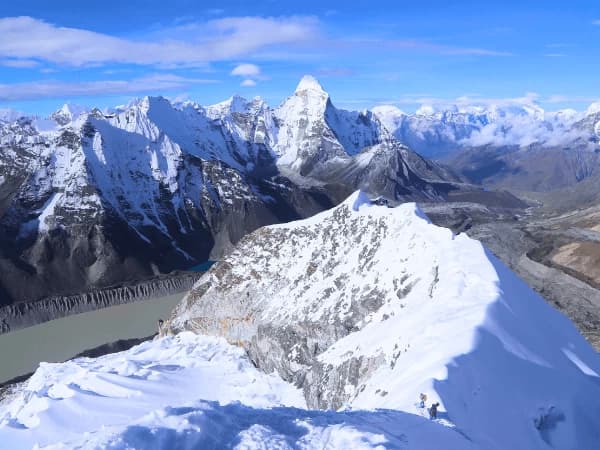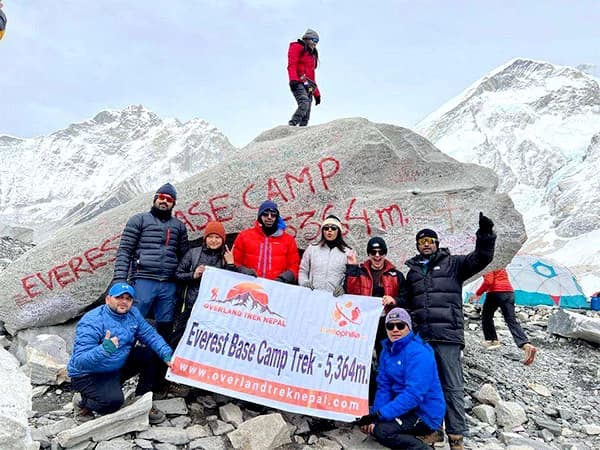The major feature of the Everest Base Camp Trek
- Dazzling sight of Mount Everest (8848.86m), the highest peak in the world.
- Thrilling adventure flight to Tenzing Hillary Airport, Lukla.
- Hike to the famous Everest Base Camp and Kala Patthar at 5555 meters.
- Stroll around busy Namche Bazaar, other Sherpa Villages, and Tengboche Monastery.
- Get amazing insights into Khumbu Glacier and Khumbu Ice Fall.
- Apart from Everest, sparkling views of Mt. Ama Dablam, Makalu, Nuptse, Pumori, Lhotse, Thamserku, and many more.
Details Brief of Everest Base Camp Trek
Everest Base Camp Trek is a legendary journey to the foothills of mighty Mount Everest, following in the footsteps of Tenzing Norgay and Edmund Hillary. On this voyage, the trail will lead you to the highest points of the trek: Kala Patthar, 5555 meters, and Everest Base Camp, 5364 meters. Accessible for novice to experienced hikers, this adventurous journey to Everest requires excellent physical fitness.
This 14-day Everest Base Camp Trek is a lifetime adventure in the Khumbu Region with outstanding views of snow-capped peaks, enriching Sherpa Culture, attractive villages, and landscapes. Moreover, following the Himalayan pathways towards the EBC and the popular Hike to Kala Patthar makes this trek exceptional. Likewise, navigating the wooden trail through the Sagarmatha National Park delivers a glimpse of several Himalayan flora and fauna.
Embarking on the Everest Base Camp is a journey and the greatest tribute to the courageous Sherpa People and their lifestyle. It is more than admiring the views of the highest peaks. Spend overnight in the Sherpa settlements like Lukla, Phakding, Namche, Tengboche, etc. Roaming around the Namche Bazaar during an acclimatization day is another exciting thing. In this town, you can do last-minute gear shopping, enjoy the bakeries, and even take out money from ATMs. During the trek through the Tengboche Village, visit the largest Buddhist Monastery of Khumbu,Tengboche Monastery.
Therefore, if you are looking for an adrenaline adventure that combines rugged landscapes, Himalayan views, rushing rivers, thrilling flights, Himalayan culture, and the highest peaks, then the Mount Everest Base Camp Trek 14 Days awaits you.
History of the Everest Base Camp trek
The history Everest Base Camp trek is famous for following the footsteps of mountaineering legends. The history of the trek is closely tied to the history of climbing Mount Everest.
Early Explorations (1920s – 1950s)
Before the 1950s, the Khumbu Valley, where EBC lies. It was largely closed to foreigners. The first expeditions to Everest had to approach the mountain from the north (Tibet).
-
The Turning Point (1950s), after Tibet closed its borders, Nepal opened its doors to international expeditions.
-
In 1953, the world watched as Sir Edmund Hillary from New Zealand and Tenzing Norgay Sherpa from Nepal. These two people successfully climbed Mount Everest for the first time. The route they took to approach the mountain started near the small village of Jiri and passed through Namche Bazaar.
The Golden Age (1960s – 1980s)
After the success in 1953, the remote village of the Khumbu began to see more outsiders climbing to the Everest Base Camp.
-
Sir Edmund Hillary was deeply affected by the poverty and needs of the local people he met on his Everest trek. After his historic climb, he dedicated the rest of his life to helping the Sherpa community. Using his fame, he founded the Himalayan Trust, which built essential infrastructure like schools, hospitals, and the famous Lukla airstrip.
-
The most significant change was the construction of the Tenzing-Hillary Airport at Lukla in 1964. This has dramatically cut the original 5-day walk from Jiri down to a thrilling 30-minute flight. This made the trek accessible to thousands of visitors.
How many seasons can one trek to Everest Base Camp?
There are four types of seasons to trek in the Everest Base Camp in the following ways:
Spring (Pre-Monsoon):
Spring is the second-best time to trek to EBC. The weather is stable, and days are generally warm and sunny. This season offers good visibility of the high peaks. The lower trails are colourful with blooming rhododendron forests. Crucially, the climbing season begins in May. This means Base Camp is full of expedition teams, creating a vibrant atmosphere. Be prepared for cold nights and higher crowds.
Important notes:
-
Months: March to May.
-
Status: Peak Season (The Second Best).
-
Weather: The weather is excellent.
-
Temperatures: Days are warm.
-
Views: Skies are clear.
-
Nature: Rhododendrons bloom at lower altitudes.
-
Activity: EBC is often busy with the Everest climbing expedition
Summer (Monsoon):
Summer is the lowest season for the EBC trek. Experts advise against trekking during these months. Heavy rain falls frequently. The trails become muddy and slippery. Clouds hide the mountain views most of the time. Lukla flights face serious delays or cancellations. This is due to poor visibility. Safety risks increase due to wet conditions.
Important notes:
-
Months: June to August.
-
Status: Low Season (Avoid).
-
Weather: Heavy rainfall is frequent.
-
Trails: Trails are muddy and slippery.
-
Risks: There is an increased risk of landslides.
-
Views: Clouds often hide the mountain views.
-
Flights: Lukla flights face major delays or cancellations.
-
Expert Advice: Experts advise against trekking during this time.
Autumn (Post-Monsoon):
Autumn is the best time to trek to EBC. The monsoon rains have ended. This removes dust from the air, providing crystal-clear visibility. The weather is highly stable. Days are pleasant and sunny, making trekking comfortable. October is the most popular month. While nights are cold, the conditions offer the best mountain views of the year. Due to high popularity, you must book flights and accommodation early.
Important notes:
-
Months: September to November.
-
Status: Peak Season (The Absolute Best).
-
Weather: The weather is highly stable.
-
Trails: Trails are dry and firm.
-
Views: Skies are crystal-clear for excellent visibility.
-
Popularity: This is the most popular time to trek.
-
Expert Advice: Book all accommodations and flights well in advance.
Winter Season (December to February):
Winter offers the clearest mountain views of the year. The skies are very stable and dry. However, this is the coldest trekking period. Nighttime temperatures drop severely. You must wear high-quality, specialised gear for survival. The trails have far fewer people. Expert advice: Only attempt this trek if you tolerate extreme cold well.
Important notes
-
Months: December to February.
-
Status: Low Season.
-
Temperatures: Temperatures are extremely cold.
-
Conditions: Nights are freezing.
-
Views: Skies are clear for excellent views.
-
Crowds: Trails have very few crowds.
-
Expert Advice: Only well-prepared trekkers should attempt this season. You must handle freezing conditions.
Classic Everest Base Camp Trekking Route Map 2025, 2026
This fascinating two-week journey to Everest Base Camp starts with a nerve-wracking flight from Kathmandu to Lukla. From here, the ascent to EBC begins at Phakding Village. The following day, we will continue to the gateway of Everest, Namche Bazaar. This bustling town of the Khumbu Region has a café, a trekking gear shop, ATMs, and other facilities. Moreover, most Everest Climbers and trekkers use this town as an acclimatization place.
The EBC Trek Route continues to Tengboche, and a visit to the famous Tengboche Monastery allows you an opportunity to experience Buddhism. Likewise, the trail continues via Dingboche, Lobuche, and the last teahouse stop of Gorakshep. From here, a hike to EBC and Kala Pathar is a famous route to admire the sunrise view and sunset views along with the enormous Mt. Everest, Ama Dablam, Lhotse, Nuptse, and so on.
The return trip to Lukla is the same way back via different Sherpa Villages. After exploring both EBC and Kala Patthar, the trail descends to Pheriche, Namche, and lastly Lukla. From Lukla to Lukla, it will be a 12-dayEverest Base Camp Trek.
Kathmandu to Lukla Flight by Helicopter or Plane?
To kick off your trip to the Everest Region, trekkers must fly to Lukla from Kathmandu or Ramechhap. During the peak trekking season(Spring & Autumn), flight to Lukla departs from Ramechhap. It lies around 150 Km away from Kathmandu. Hence, you have to drive for 4-5 hours to reach Ramecchap from Kathmandu. In peak season, the Sharing Jeep or Bus departs to Ramechhap from Kathmandu regularly. The Kathmandu to Ramechhap Bus Ticket fee is $30 per person.
Flying to Lukla can be done in two ways, either by plane or by Helicopter. The Kathmandu to Lukla Helicopter price is $600 per person. Whereas, the flight ticket from Kathmandu to Lukla is $220 per person. You can let us know if you need a Helicopter Tour from Kathmandu to Lukla to avoid the hassle of driving to Ramecchap.
Note: Flight from Kathmandu-Lukla-Kathmandu might get delayed or canceled if the weather is not favorable.
Mountain Views from Hike to Kala Patthar
Kala Patthar is a popular vantage point from which trekkers can witness magical views of soaring peaks during the Everest Base Camp Trek. The hike starts from Gorakhshep, which covers a total distance of 3.7 km for a round trip. Located 200 meters above EBC, Kala Patthar Hike displays sparkling views of gigantic Mt. Everest, Ama Dablam, Lobuche, Nuptse, Changtse, Lhotse, Pumori, Khumbu Ice Fall, and Khumbu Glacier.
In the regular Everest Base Camp Trek Itinerary, the Hike to Kala Pathar is for an early sunrise view from the top. However, trekkers who have a very short EBC Trek visit this viewpoint for sunset views. The views from the top of this viewpoint are clearer than from the base camp itself.
Permits for the Everest Base Camp trek
What is a permit?
A permit is an official document issued by a government or authority that gives you formal permission to do something.
How many types of permits are needed for the Everest Base Camp trek?
There are two types of permits is needed in the Everest Base Camp trek. But the first two are officially required, and the third is optional.
1) Khumbu Pasang Lhamu Rural Municipality Entry Permit (The Local Fee)
2) Sagarmatha National Park Entry Permit (The Conservation Fee)
3) Gaurishankar Conservation Area Permit (GCAP)
Khumbu Pasang Lhamu Rural Municipality Entry Permit (The Local Fee)
What it is: This permit is issued by the local government of the Khumbu region. It replaced the old TIMS Card in 2018.
Purpose: The fees collected go directly to the local community. This money supports local infrastructure. It also funds development and trail maintenance in the Khumbu area.
Where to Get It: You cannot get this permit in Kathmandu. You must obtain it upon arrival at the permit office in Lukla. You can also get it at the checkpoint in Monjo.
Cost (Approx.): Expect the cost to be about NPR 3,000 per person. This is approximately USD 20-30$.
Sagarmatha National Park Entry Permit (The Conservation Fee)
-
What it is: This is the official entry ticket to the Sagarmatha National Park. This entire region is a UNESCO World Heritage Site.
-
Purpose: This fee funds conservation efforts and park management. It also supports the protection of the park's fragile environment, wildlife, and Sherpa cultural heritage.
-
Where to Get It: You can obtain this permit in Kathmandu at the Nepal Tourism Board Office. You can also get it at the park's entry checkpoint in Monjo. (This checkpoint is just before Namche Bazaar.)
-
Cost (Approx.): Expect the cost to be about NPR 3,000 per person. This is approximately USD 20-30$ for foreign nationals.
Gaurishankar Conservation Area Permit (GCAP)
-
When is it needed? This permit is only required if you choose the traditional, longer EBC trek. This trek starts from Jiri or Shivalaya. (If you fly to Lukla, you do not need this.)
-
Why is it needed? That route passes directly through the protected Gaurishankar Conservation Area. This fee helps support the conservation efforts in this specific area.
-
Where to Get It: You must obtain this permit in Kathmandu at the Nepal Tourism Board Office before starting the trek.
-
Cost (Approx.): The cost is typically approximately NPR 3,000 per person (approximately USD 20-30) for foreign nationals.
Summary table of the permit cost for the Everest Base Camp trek
|
Permit Name |
Status (Standard EBC Trek) |
Cost (Approx. For Foreigners) |
Where to Obtain It |
|
1. Khumbu Pasang Lhamu Rural Municipality Permit |
MANDATORY (Replaced TIMS Card) |
NPR 3,000 (USD 20-30) |
Lukla or Monjo Checkpoint (Cannot be obtained in Kathmandu) |
|
2. Sagarmatha National Park Entry Permit |
MANDATORY |
NPR 3,000 (USD 20-30) |
Kathmandu (Nepal Tourism Board) OR Monjo Checkpoint |
|
3. Gaurishankar Conservation Area Permit (GCAP) |
OPTIONAL (Only for longer routes) |
NPR 3,000 (USD 20-30) |
Kathmandu (Nepal Tourism Board) |
The total permit cost for the Everest Base Camp Trek (including the optional Gaurishankar Conservation Area Permit for the Jiri route) is NPR 9,000, and the approximate cost in USD is USD 60-80.
Can I see Mount Everest from the EBC?
Hiking to Everest Base Camp is itself an iconic walk near Mount Everest. Just like Kalapathhar, the Everest Base Camp Hike begins from Gorakshep, covering a distance of 3.3 KM. However, the question is, can you see the views of Everest from the base camp? Honestly, you can’t see the clear views of Everest from the base camp than those of Kala Patthar. Travelers hike to EBC just to mark their achievement of reaching the base camp. Hence, to witness the 360-degree views of Mt. Everest and several peaks, the Kala Patthar Hike is an ideal option.
14-day Everest Base Camp Trekking Package Cost
The Everest Base Camp Trek cost is based on several aspects, including the EBC Trek Itinerary, best time, level of accommodation, flight to Lukla by Heli or Plane, Guide fee, porter fee, etc. Mostly, the Everest Base Camp Trek costs from $1499 to $3000, depending on the service you are looking for. The cost goes higher if you are looking for a Luxury Everest Base Camp Trek with luxury accommodations, meals, and a daring flight back to Kathmandu by Helicopter.
Possible Side Trips with Everest Base Camp Trek
Wanderers who want to explore the Everest Region more than the EBC have several other possibilities to trek around Everest. Everest Three High Passes Trek,Gokyo Valley Trek,Ama Dablam Base Camp Trek, and Pikey Peak Trek are the possible trips you can do with EBC 14 Days. Combining one of these trips with EBC is an excellent way to discover the entire Khumbu Region.
How to prepare for the Everest Base Camp trek in Nepal
The EBC trek preparation is a long, sustained effort, not a race. Your preparation must focus on stamina and smart choices. Do not rely on raw speed or brute strength.
The main focus is on three preparations to climb the Everest Base Camp trek in the following ways:
1) Physical preparation
2) Gear and logistic preparation
3) Altitude Sickness Prevention
Physical preparation for the Everest Base Camp Trek
Physical preparation generally takes three to six months. Once you complete this training, your body is conditioned for the journey. You are now fit for the challenge of the Everest Base Camp trek. You can face the mountains with confidence, not just hope.
Physical preparation for EBC uses three essential pillars. These train your body for the long distances and thin mountain air.
1. Heart and Lung Fitness (Cardio)
Less oxygen is available at high altitude. Strong cardio helps your body use that limited oxygen well. This improves your body's response to the altitude and prevents major fatigue.
Training example: Run, cycle, swim, or walk fast for 30 to 60 minutes per session.
2. Muscle Strength and Power
Building muscular strength generally takes three to six months. Once you complete this training, your legs and core are conditioned for the long journey. You are now strong enough for the continuous uphill and downhill challenge. You can face the steep passes with power, not strain.
Strong legs, core, and ankles prevent injuries. This is vital on the trail's uneven, rocky ground. Strong legs handle the continuous climbing and descending without burning out.
Training Examples: Squats, lunges, calf raises, step-ups (with a pack), and core exercises like planks.
3. Real-World Stamina (Functional Training)
Building your real-world stamina generally takes three to six months. Once you complete this training, your body is conditioned for continuous effort. You are now ready for the long, back-to-back days of walking. You can complete the full journey with stamina, not weariness.
This is the best practice for the trek itself. Hiking long distances helps you break in your boots. It shows you how your body gets tired. It also gets you used to carrying your daypack weight.
Training examples: Long hikes (4–6 hours) on multiple days. Walk on stairs or high-incline treadmills. Use your trekking poles during practice hikes.
Physical preparation cost for the Everest Base Camp Trek
The financial cost of physical preparation for the Everest Base Camp Trek is flexible. It depends entirely on your choices. The cost can range from almost nothing to several hundred dollars.
Here you see the table, and you analyse what cost is required for physical preparation.
|
Item |
Estimated Cost |
Notes |
|
Cardio Training |
$0 |
Use local parks, sidewalks, or running trails. |
|
Strength Training |
$0 - $20 |
Use bodyweight exercises (squats, lunges, step-ups) or public steps/stairs. |
|
Functional Training |
$0 -$30 |
Long hikes on local trails. Cost might include gas/public transport to trailheads. |
|
Trekking Poles |
$30 - $50 (Optional) |
A one-time purchase, but highly recommended for training and the trek. |
The most practical total cost to budget for your physical preparation is approximately 50-80 dollars
Gear and logistic preparation for the Everest Base Camp trek
Gear and logistics preparation ensure your safety and comfort on the Everest Base Camp trek. Getting your gear ready early protects you from the mountain cold and elements. Logistics planning covers all your paperwork and crucial booking details. Proper preparation minimizes risks on the trail. It allows you to enjoy the Himalayas without worry.
What are gear and logistics?
Gear is the physical stuff you carry. It includes your boots, jacket, and sleeping bag. Gear keeps you safe and warm.
Logistics is the planning you arrange before the trip. It includes permits, flights, and hiring a guide. Logistics make the trip happen smoothly.
What types of gear and logistics are required for the Everest Base Camp Trek
1) Essential Gear
Essential gear refers to all the must-have physical items for the EBC trek. These items protect you from the extreme cold, wind, and altitude. They ensure you stay safe, warm, and dry for two weeks on the trail. Your layered clothing, high-quality boots, and a warm sleeping bag are the most critical pieces. Do not skimp on this preparation.
2) Daily Wear
-
Layered Clothing: Lightweight moisture-wicking base layers, thermal layers for warmth, and insulating layers.
-
Trekking Pants: Comfortable and quick-drying.
-
Shirts: Long-sleeve shirts for sun protection and short-sleeve shirts for warm weather.
-
Warm Hat & Gloves: For colder evenings and high-altitude areas.
-
Sturdy Hiking Boots: Waterproof and comfortable for trekking.
-
Casual Shoes: For town and indoor activities.
-
Socks: Wool or synthetic, including a few pairs of thicker hiking socks.
-
Scarf/Buff: For warmth
3) Gear
-
Daypack: For day hikes and excursions.
-
Trekking Poles: Helpful for uneven terrain.
-
Sleeping Bag: If you plan to camp or stay in basic accommodations.
-
Water Bottle: Reusable, preferably insulated.
-
Headlamp/Flashlight: For early mornings and evenings.
-
Power Bank: To keep devices charged during treks.
4) Garment
|
Items |
Details |
Quantity |
|
Underwear |
Underwear Breathable synthetic |
3 |
|
Socks |
Wool BYO |
3 |
|
Bra |
Sports BYO |
|
|
Base layers – Pants |
Merino wool BYO |
1 |
|
Trekking shirt |
Synthetic lightweight BYO or purchase it in Kathmandu |
2 |
|
Rain pants |
Synthetic lightweight Frogg Toggs are excellent |
1 |
|
Trekking pants |
Synthetic lightweight BYO or purchase in KTM |
2 |
|
Hiking Shoes/Boots |
BYO Salmon Quest 4D or Xultra 3 or 4 |
1 |
|
Camp shoes |
Down booties BYO or purchase in Ktm |
1 |
|
Gloves |
One pair of thin merino wool. 2nd pair thick insulated |
2 |
|
Hat |
Sun hat or peak cap with neck protection. BYO |
1 |
|
Down Jacket |
BYO |
1 |
5) Hygiene and Safety
-
Toiletries: Biodegradable soap, toothbrush, toothpaste, and any personal hygiene items.
-
Sunscreen: High SPF for sun protection.
-
Lip Balm: With SPF to prevent chapping.
-
Insect Repellent: Especially in warmer months.
-
First Aid Kit: Include any personal medications, band-aids, antiseptic wipes, and blister treatment.
6) Mandatory Logistics (What You Book & Document)
Mandatory logistics cover all the necessary planning and official documents needed for the EBC trek. These steps must be completed before you start walking. Logistics ensure your journey is safe and legally compliant. Crucial items include your travel insurance, mandatory permits, and flight bookings. These arrangements make your trip run smoothly.
-
Permits: You must get two permits: the Sagarmatha National Park Permit and the Khumbu Local Permit. (You get these in Kathmandu, Lukla, or Monjo.)
-
Travel Insurance: This is mandatory. Your insurance must cover emergency helicopter rescue up to 6,000 meters.
-
Flights: Book your international flights and the necessary domestic flights (Kathmandu to Lukla and back).
-
Visa: Get a valid Nepal entry visa. (You can often get this upon arrival at the Kathmandu airport, TIA.)
-
Support: Arrange and book your licensed mountain guide or porter. This is highly recommended.
-
Cash: Carry enough Nepalese Rupees (NPR) cash. This covers trail expenses, tips, and fees, as ATMs are not available above Namche Bazaar.
Summary table of Gear and logistic preparation costs for the Everest Base Camp trek
|
Category |
Item |
Budget Range (USD) |
Mid-Range/High-End (USD) |
|
Footwear |
Trekking Boots (Crucial) Trekking Poles (Pair) |
$100 - $180 $25 - $50 |
$200 - $350 $60 - $120 |
|
Outerwear |
Down Jacket (Heavy/High-Altitude) Waterproof Shell Jacket |
$150 - $250 $80 - $150 |
$300 - $600 $200 - $400 |
|
Sleep |
Sleeping Bag (-15 degrees Celsius related) |
$100 - $200 |
$300-$500 |
|
Layering |
Thermal Base Layers (2 sets) |
$50 - $80 |
$100-200$ |
|
Equipment |
Daypack (30-40L) Headlamp |
$40 - $80 $15 - $30 |
$100 - $180 $40 - $70 |
|
Accessories |
Gloves/Mittens & Hat (Winter Set) |
$40 - $70 |
$80 - $150 |
The total cost for essential gear is wide. It usually ranges from USD 700 to over USD 2,500. Quality and brand choice drive this price difference. The heavy down jacket, warm sleeping bag, and good boots are the most expensive items. You can cut costs greatly by renting the large items in Kathmandu.
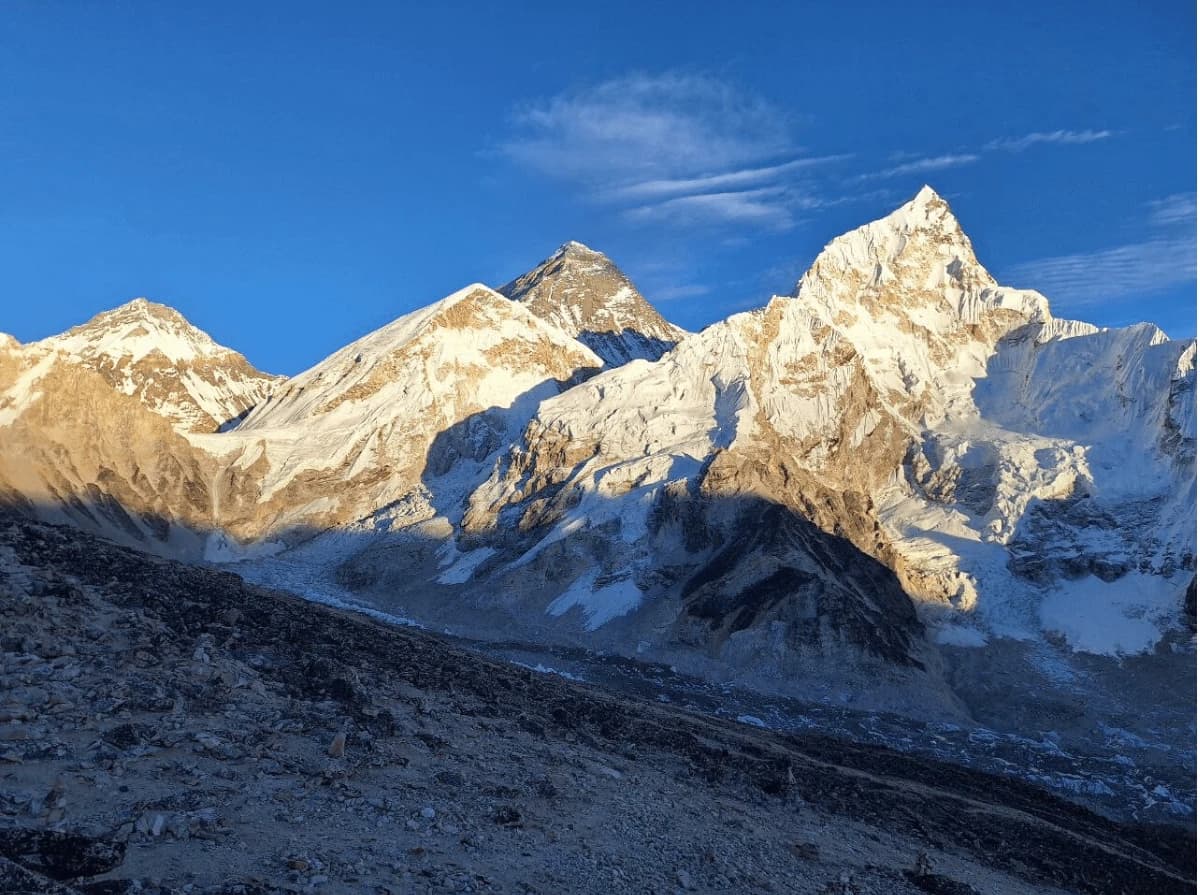
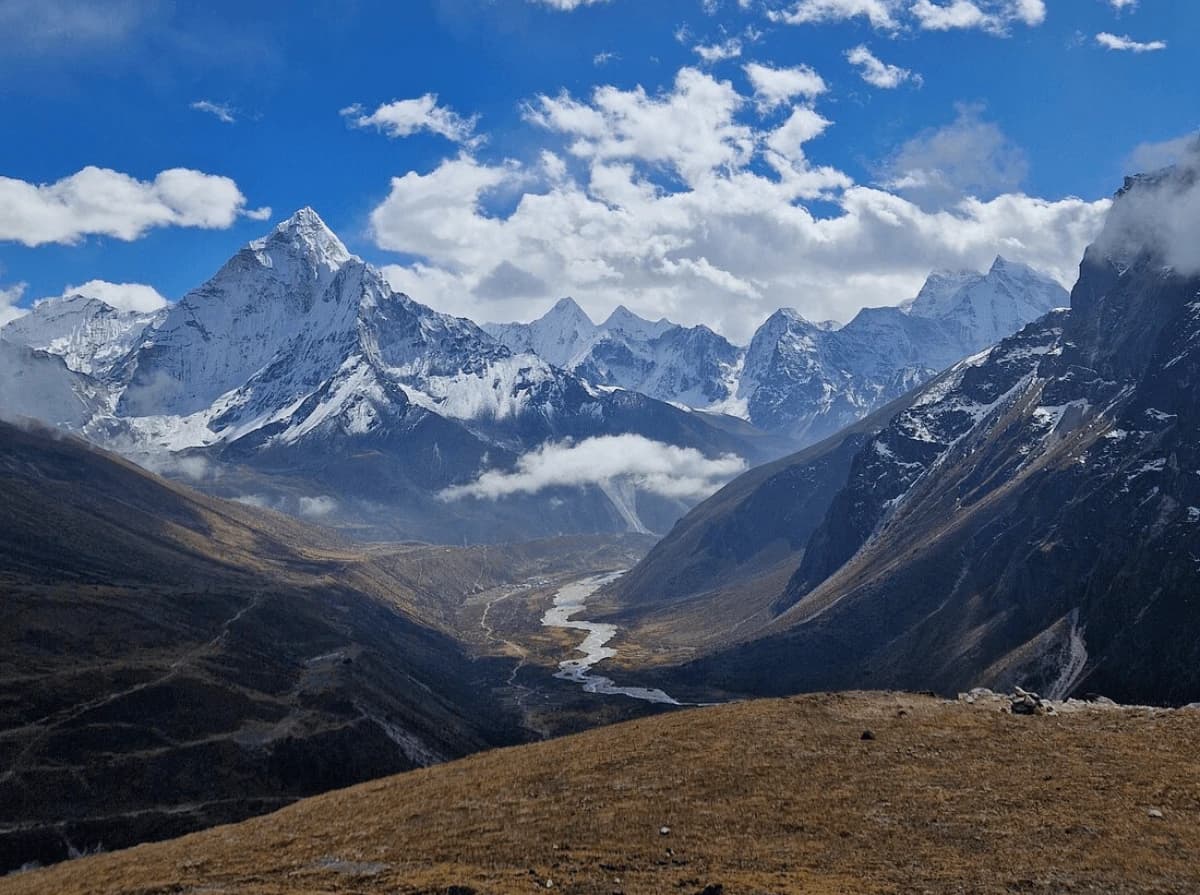
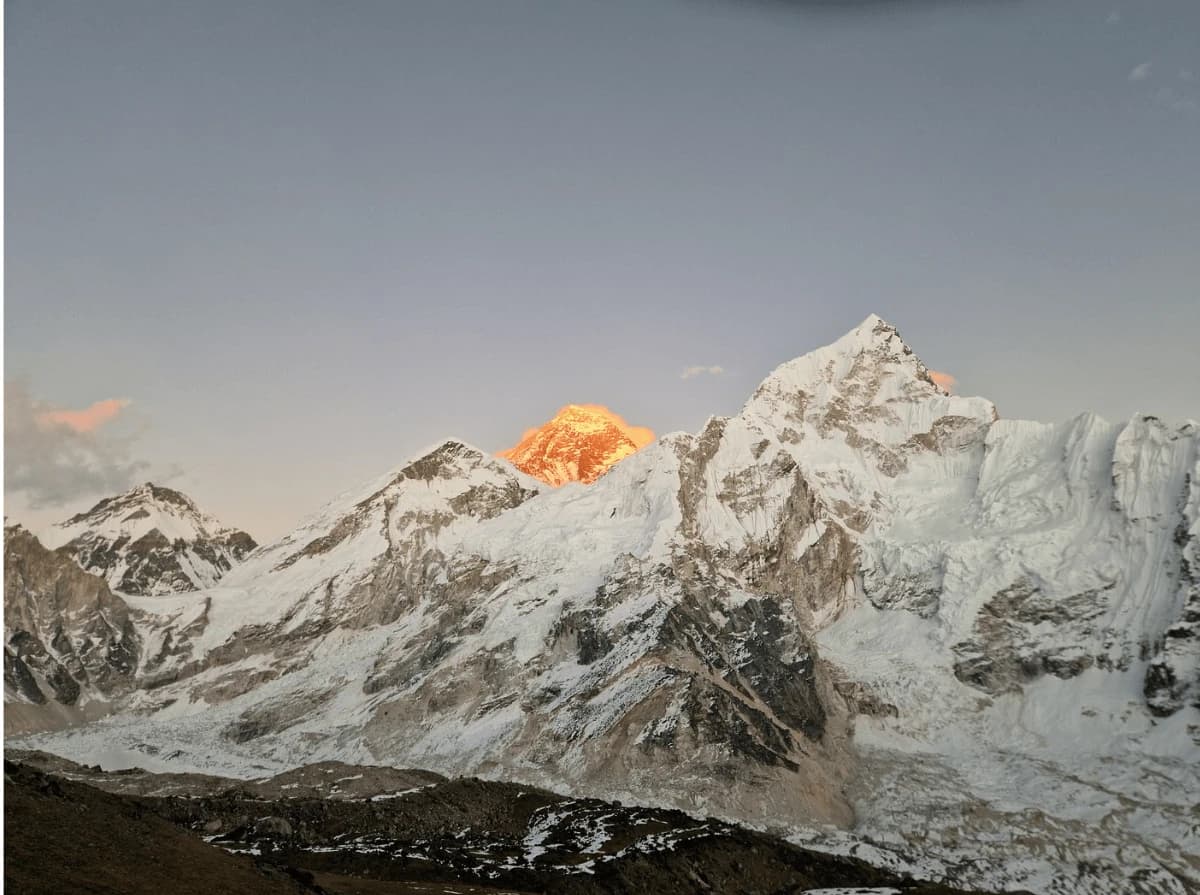

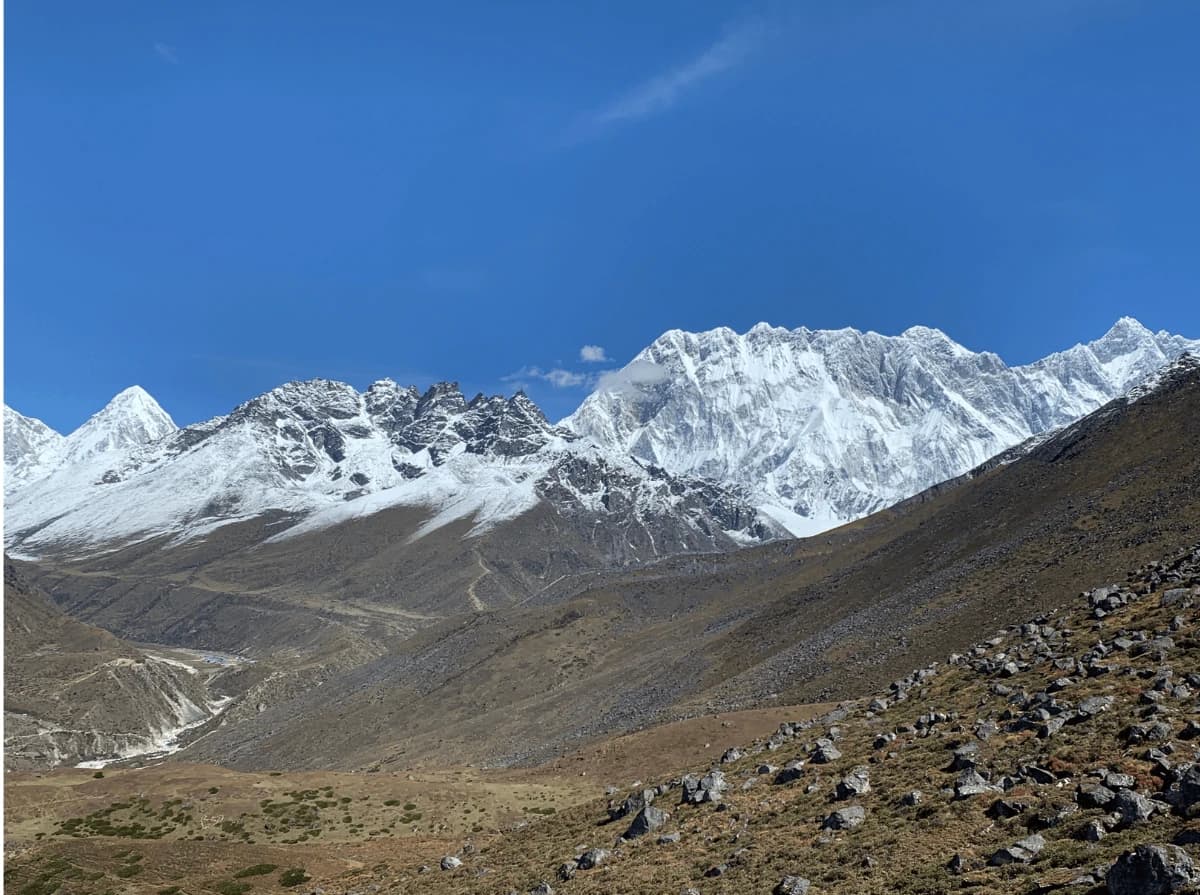
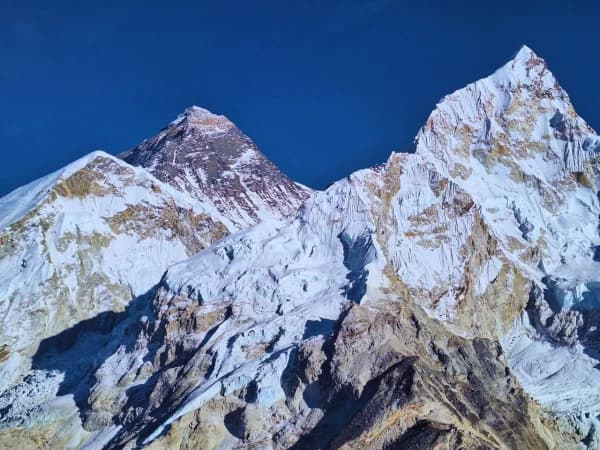
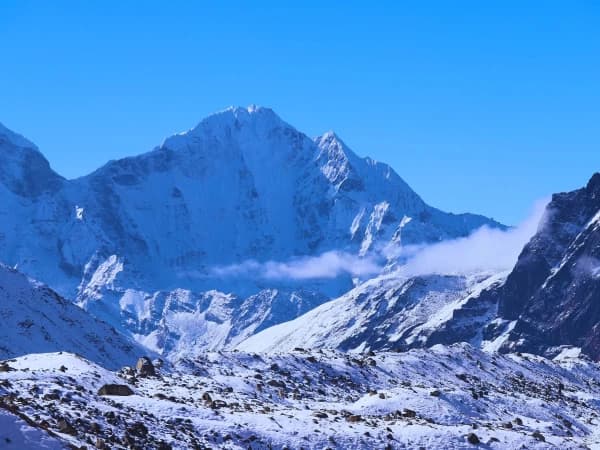
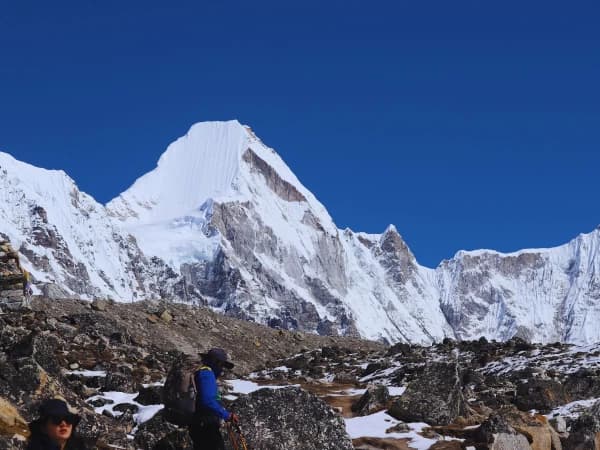

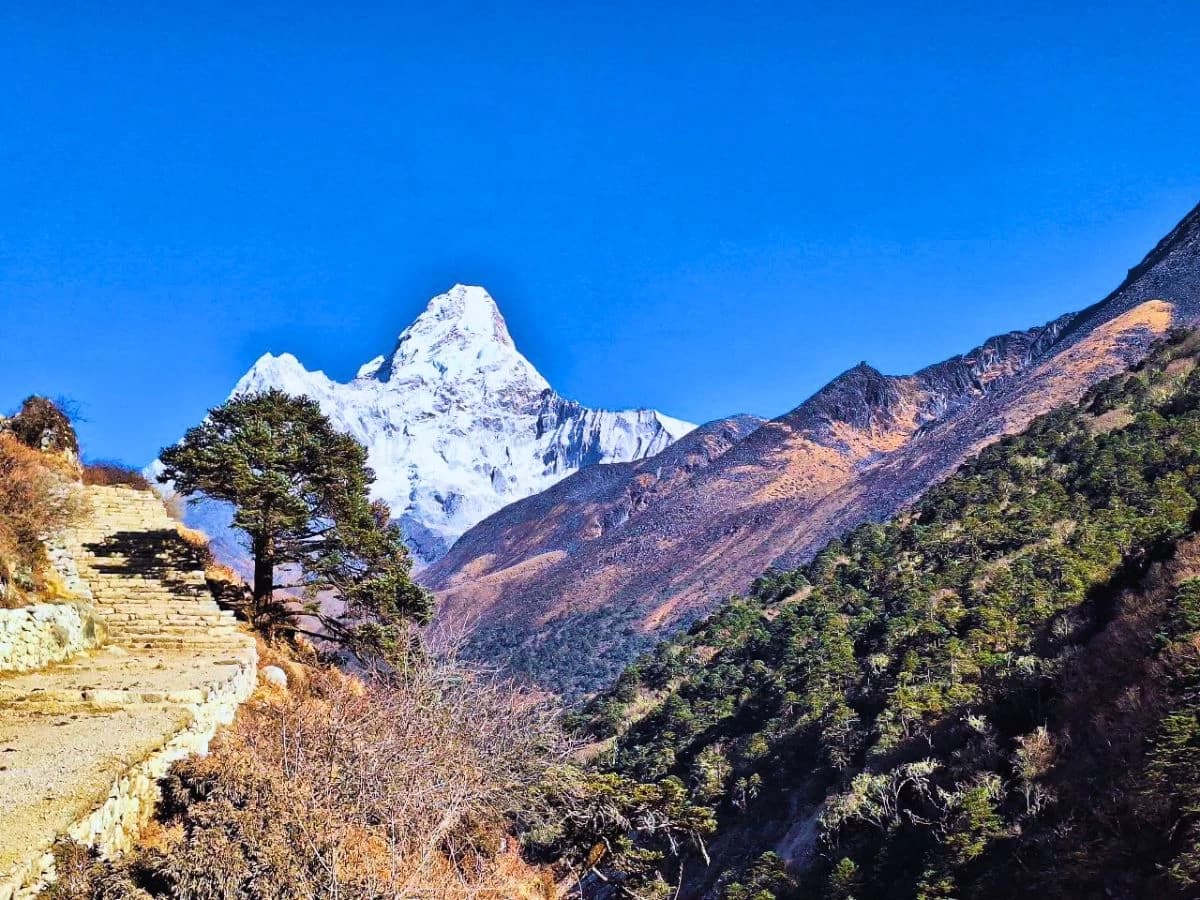

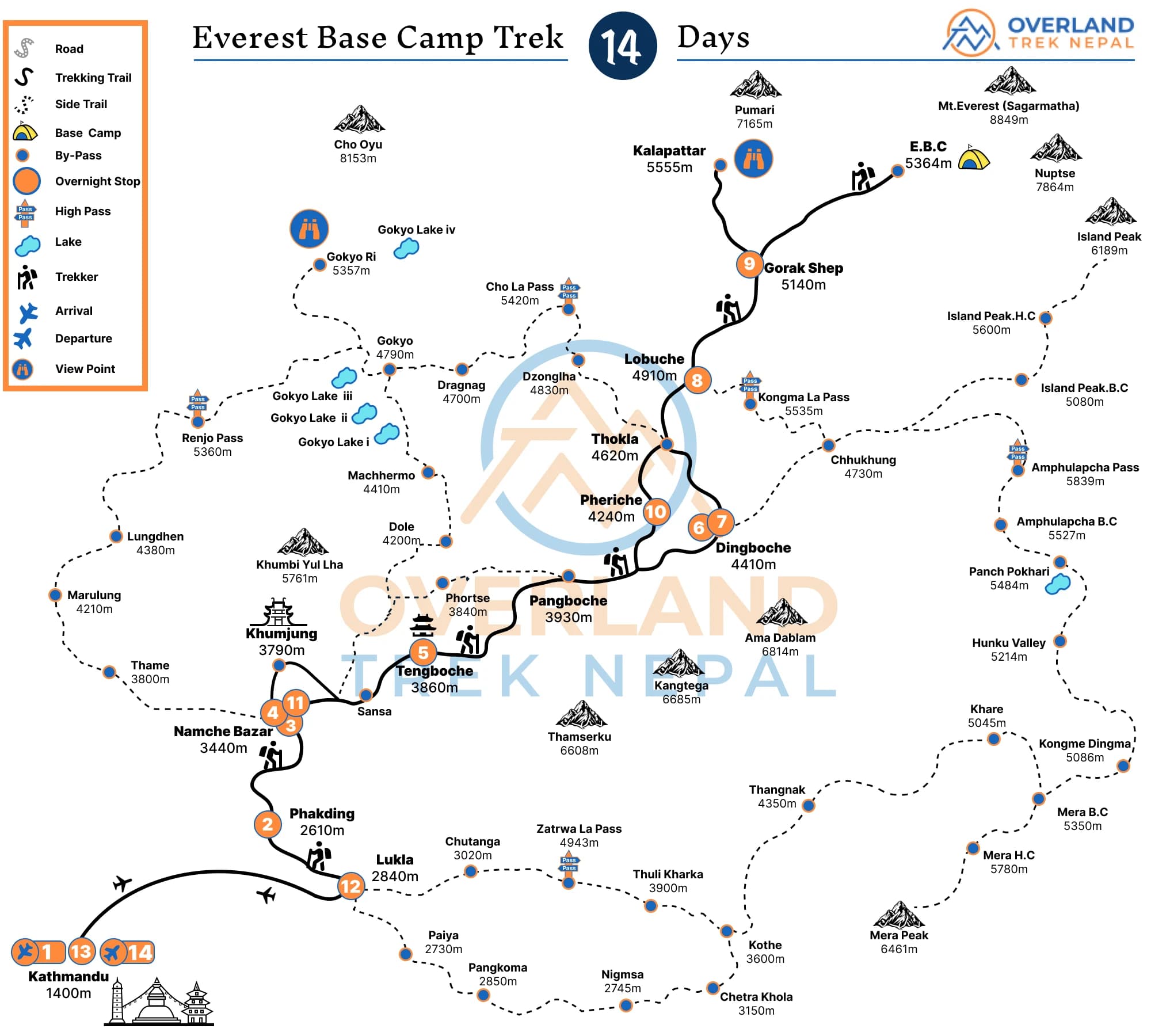
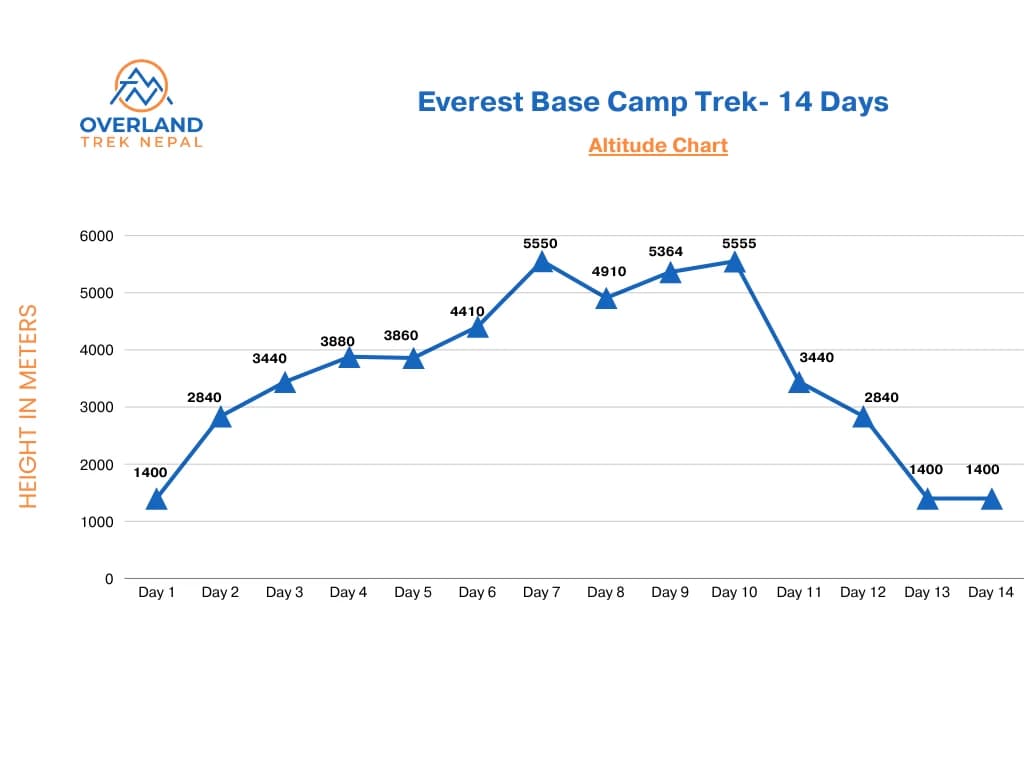




-1.webp&w=640&q=75&dpl=dpl_67hAJxXBwpePvYGQgDjD4wggXuGQ)
